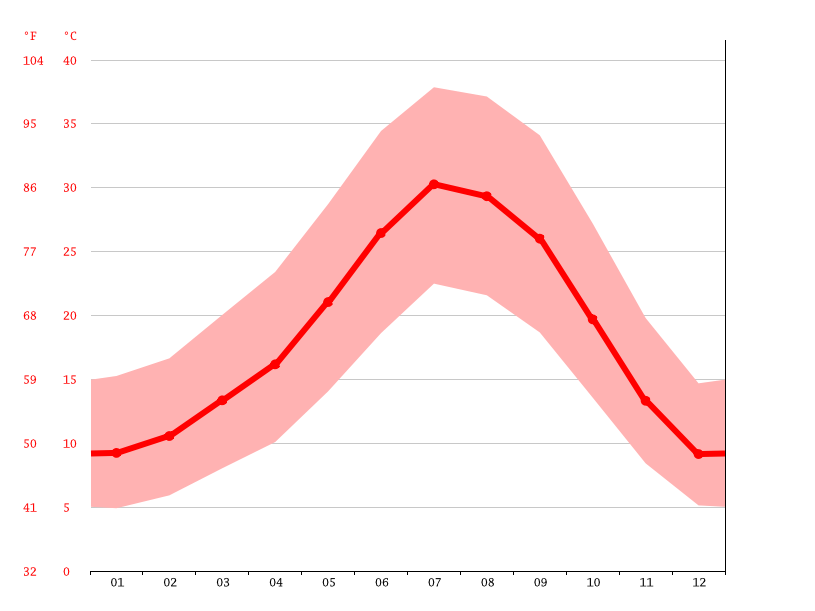Understanding Temperature In London: A Comprehensive Guide
The temperature in London is a topic of interest for many, whether you're a resident, a tourist, or simply someone curious about this vibrant city. Known for its rich history and diverse culture, London also has a climate that can be quite varied, making it essential to understand the temperature trends throughout the year. In this article, we will delve into the nuances of London's weather, exploring seasonal changes, average temperatures, and tips on how to prepare for different weather conditions.
As one of the most iconic cities in the world, London attracts millions of visitors each year. The city's climate can significantly influence travel plans, outdoor activities, and even daily life for its residents. Thus, knowing what to expect in terms of temperature can enhance your experience and help you make informed decisions.
In the following sections, we will break down the temperature trends in London by season, provide historical data, and offer insights into how climate change may be affecting weather patterns. Whether you're planning a visit or just curious about the city's climate, this guide will serve as a valuable resource.
Table of Contents
- Seasonal Temperature Trends in London
- Monthly Average Temperatures
- Understanding Weather Patterns
- Impact of Climate Change on London's Temperature
- Preparing for London's Weather
- Temperature Statistics in London
- Conclusion
- Sources and References
Seasonal Temperature Trends in London
The temperature in London varies significantly across the four seasons, each offering a unique experience for residents and visitors alike. Understanding these seasonal trends is crucial for planning your activities accordingly.
Spring (March to May)
Spring in London is characterized by mild temperatures as the city begins to bloom. Average temperatures range from 8°C (46°F) in March to about 15°C (59°F) in May. Rainfall is common, but sunny days become more frequent as the season progresses.
Summer (June to August)
Summer brings warmer temperatures, with averages ranging from 15°C (59°F) to 22°C (72°F). However, heatwaves can push temperatures to over 30°C (86°F). This season is perfect for outdoor activities, festivals, and exploring London's parks.
Autumn (September to November)
Autumn sees a gradual decrease in temperature, with averages falling from 19°C (66°F) in September to around 10°C (50°F) in November. This season is known for its beautiful foliage and is a great time to visit for those who prefer cooler weather.
Winter (December to February)
Winter in London can be chilly, with average temperatures ranging from 2°C (36°F) to 8°C (46°F). Snow is rare but not impossible, and the city is often adorned with festive decorations during this time, making it a magical experience.
Monthly Average Temperatures
| Month | Average High (°C) | Average Low (°C) |
|---|---|---|
| January | 8 | 2 |
| February | 9 | 2 |
| March | 12 | 4 |
| April | 15 | 6 |
| May | 18 | 9 |
| June | 21 | 12 |
| July | 24 | 14 |
| August | 23 | 13 |
| September | 20 | 11 |
| October | 16 | 9 |
| November | 12 | 5 |
| December | 9 | 3 |
Understanding Weather Patterns
London's weather is influenced by its geographical location and maritime climate. The city experiences a mix of oceanic and continental climates, leading to unpredictable weather patterns.
Common weather phenomena include:
- Rain: London is known for its drizzly weather, particularly in autumn and winter.
- Fog: Fog can occur, especially during colder months, impacting visibility.
- Wind: London can experience strong winds, particularly during winter storms.
Impact of Climate Change on London's Temperature
Climate change is increasingly affecting global weather patterns, and London is no exception. Studies have shown rising temperatures over the past few decades, with projections indicating that this trend will continue.
Key impacts include:
- Higher average temperatures, particularly during summer months.
- Increased frequency of heatwaves.
- Changes in precipitation patterns, leading to wetter winters and drier summers.
Preparing for London's Weather
When visiting or living in London, it's essential to be prepared for the city's variable weather. Here are some tips:
- Layering: Wear layers to adapt to temperature changes throughout the day.
- Waterproof clothing: Carry an umbrella and wear waterproof jackets, especially in spring and autumn.
- Sun protection: In summer, don't forget sunscreen and sunglasses, as UV levels can be high.
Temperature Statistics in London
According to historical data from the UK Met Office, London's average temperatures have risen over the years. Here are some statistics:
- The warmest month on record was July 2019, with an average temperature of 23.8°C (74.8°F).
- January remains the coldest month, with an average of 5.5°C (41.9°F).
- Annual average temperature for London has increased by about 1.5°C (2.7°F) since 1980.
Conclusion
In conclusion, understanding the temperature in London is crucial for anyone who visits or lives in this dynamic city. From seasonal trends to the impact of climate change, being informed can help you plan better and make the most of your time in London. Don't forget to prepare for the unpredictable weather, and embrace the unique experiences each season brings.
We encourage readers to leave their comments below, share this article with others, and explore more informative content on our site.
Sources and References
1. UK Met Office: Historical Weather Data
2. Climate Change Report by the UK Climate Change Committee
3. London Weather Statistics by the BBC Weather Center
Understanding Prudential Financial: Your Guide To Financial Security
Most Sexually Active Zodiac Signs: Unveiling The Passionate Astrological Profiles
The Hunger Games Leaving Peacock: What You Need To Know


